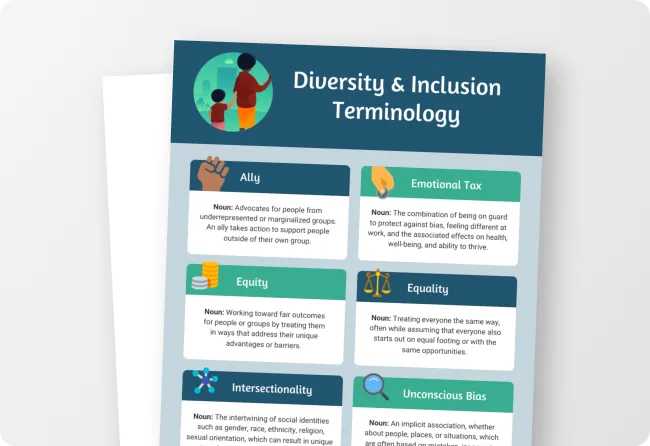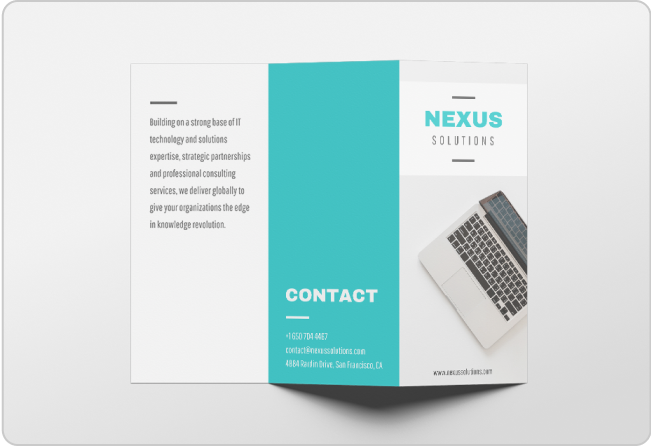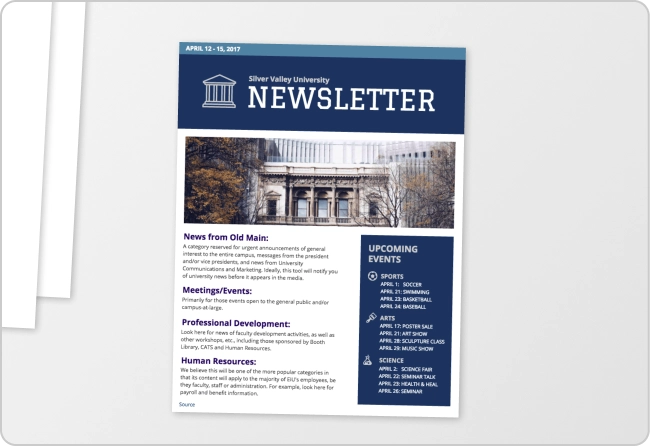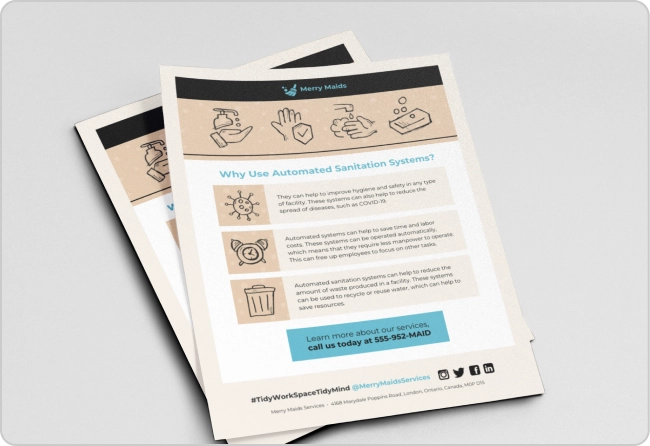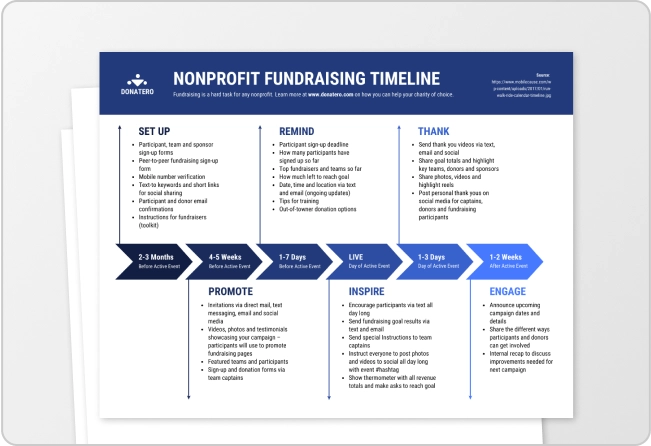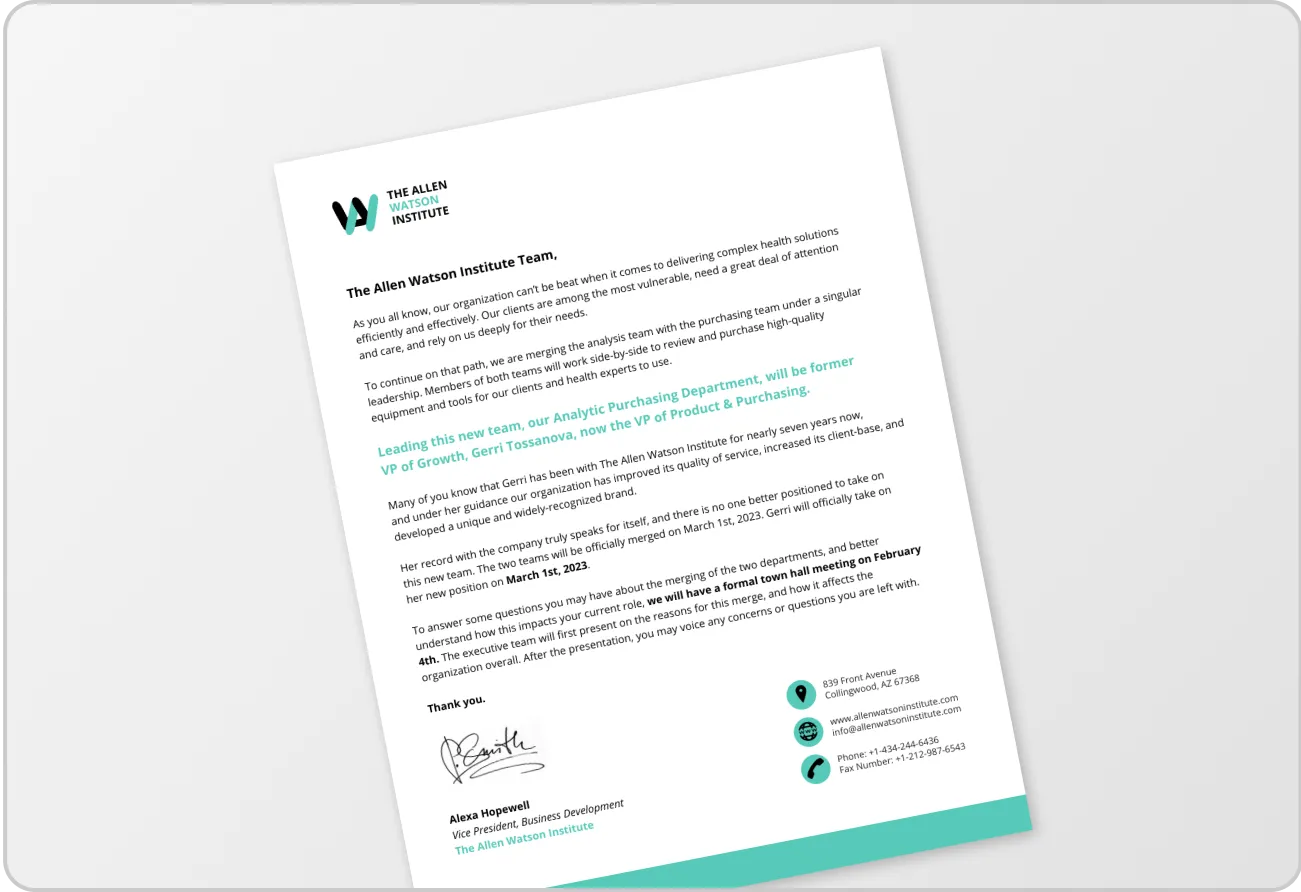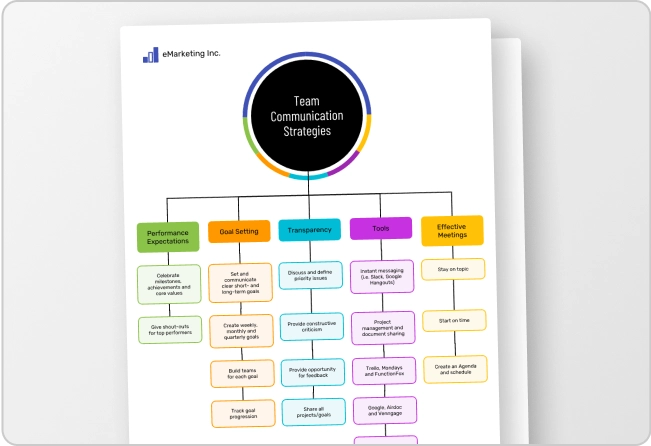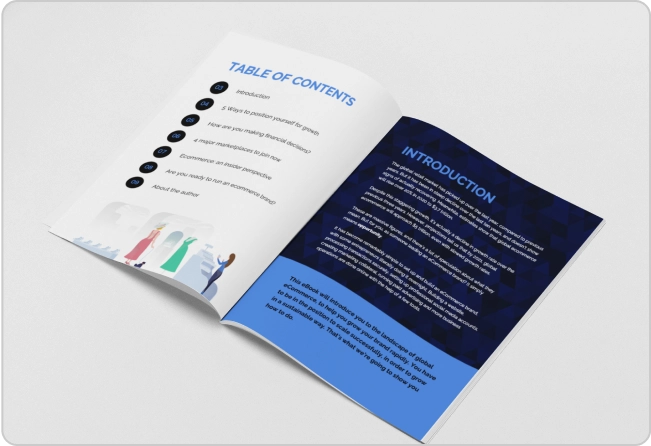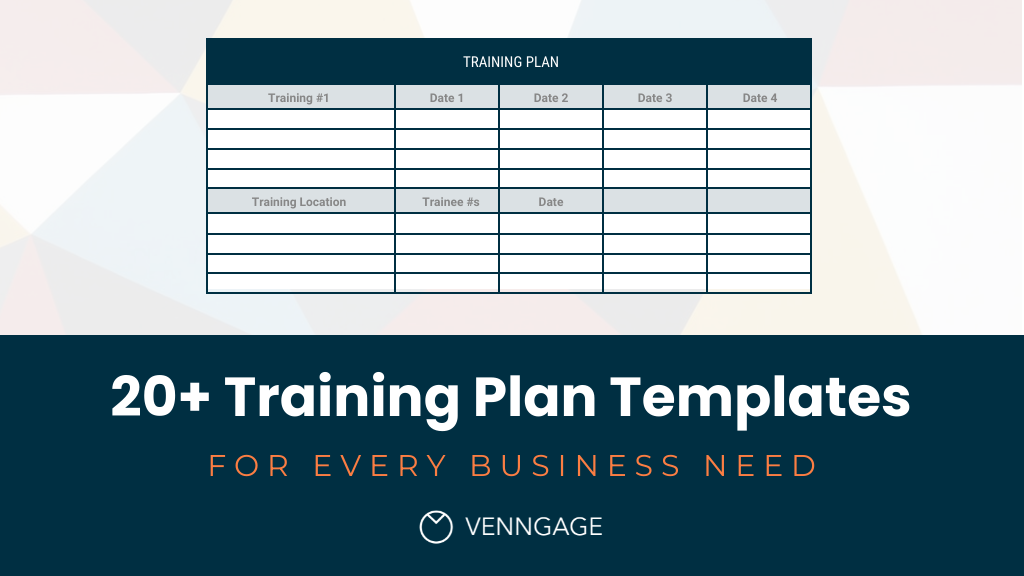
An employee training plan acts as the ultimate cheat sheet for building a successful workforce. After all, a company is only as good as its people. So, whether you’re bringing in new staff, transitioning someone to a new role or up-skilling professionals in their current job, it pays to create effective training plans.
Though investing in training can be expensive, not making sure your employees have the skills they need is even costlier — from the risk of mistakes to simply falling behind your competition.
But you can save time and money developing these programs by starting with a training plan template. Keep reading for tips and templates to help you supply your team with the training they need to succeed.
What is a training plan?
A training plan is a structured roadmap that outlines the goals, methods and timeline for employee learning and development. It helps align individual training objectives with broader organizational goals, ensuring that employees acquire the skills they need to perform effectively.
Why are training plans important?
Employee training frameworks provide a clear direction for professional growth, reduce skill gaps and improve overall job performance. They also help businesses retain talent, boost productivity, and maintain a competitive edge by ensuring teams are up to date with industry standards and tools. To maximize the impact of your training efforts, partnering with professional training providers like Edstellar can help design and implement structured programs tailored to your organization’s goals.
Types of training plans
Learning plans vary depending on business needs and employee roles. Common types include:
- Onboarding training plans: Designed to help new hires get up to speed with company policies, systems, and culture.
- Technical training plans: Focus on improving job-specific skills like software use, machinery operation, or data analysis.
- Soft skills training plans: Enhance communication, leadership, time management, and other interpersonal skills.
- Compliance training plans: Ensure employees understand and follow laws, regulations, and internal policies.
- Role-specific training plans: Tailored for specific positions, helping employees advance within their career path.
What should a training plan include?
The exact content and setup of a training plan varies depending on the end goal, but here’s a broad overview of what your training plan should include:
- SMART goals: Clearly define what trainees will learn and be able to do by the end (e.g., “use software X proficiently in 2 weeks”).
- Tailored training: Adapt the program to the existing knowledge, skills, and preferred learning styles of the target audience.
- Content & delivery: Plan the specific topics to be covered, choose appropriate training methods (lectures, demonstrations, etc.), and decide the format (in-person, online, blended).
- Logistics: Schedule the training (duration, frequency), allocate resources (trainers, equipment), and determine methods to assess learning (quizzes, practical exercises). You can use a work scheduling app to make this process easier.
- Feedback and improvement: Establish methods to assess trainee progress and collect input from trainees and trainers to improve future iterations of the training program.
Training plan vs. training schedule
When I first started helping our HR team create internal training content, I kept mixing up training plans and training schedules. I assumed they were just two names for the same thing. But after sitting in on a few onboarding sessions and helping document them, it clicked: a training plan is the strategy; a training schedule is the execution.
In my experience, teams often jump straight into building calendars without first clarifying what employees actually need to learn. That’s where things fall apart. You can have a beautiful schedule, but if it’s not grounded in a solid plan, the sessions don’t deliver much value.
What is a training plan template?
A training plan template lays out the why and what of your training efforts. From a marketer’s perspective, it reminds me of a campaign brief—it defines the goals, the audience, the message and how you’ll measure success.
Subjectively, I find training plan templates incredibly helpful when working with cross-functional teams. They keep everyone aligned and cut down on vague expectations. Objectively, they’re essential for identifying skill gaps, tracking progress and linking training to company objectives.
What is a training schedule template?
A training schedule template, on the other hand, is more tactical. It breaks down the when, where and how long of each session. Think of it like a publishing calendar for your content—it keeps everything organized and ensures your team knows what’s happening, and when.
From what I’ve observed, schedules are often the first thing people want to create—but without a plan behind them, they’re just busywork. When both templates are used together, the results are much stronger.
When to use a training plan vs. a training schedule?
If you’re still figuring out what your team needs to learn, start with a training plan. That’s your foundation—it’s strategic, long-term and aligns with business goals.
Once you’ve got that in place, use a training schedule to roll it out effectively. That’s where the logistics come in—dates, times, facilitators, delivery formats and so on.
In my opinion, marketers could benefit from this kind of thinking, too. We often default to campaign calendars without first building a solid strategy. The same applies to training—plans before schedules. Always.
How to create a training plan?
Creating a training plan reminds me a lot of building a content strategy. It’s not just about filling a calendar—it’s about creating something intentional that drives real outcomes.
I’ve worked on a few internal training projects alongside L&D teams, and trust me, the most effective ones always followed a structured, goal-first approach.
Here’s a step-by-step process that’s worked well in my experience.
Step 1: Identify training goals & gaps
Before drafting anything, pause and ask: What’s the goal here?
When I helped develop onboarding content for our marketing team, we realized we were making assumptions about what new hires already knew. It wasn’t until we sent out a quick skills survey that we saw some clear gaps—especially in campaign reporting tools.
Objective observation? You need data. Use surveys, performance reviews or even one-on-one chats to uncover what your team actually needs. From there, set measurable goals so you’re not just “training for training’s sake.”
Step 2 – Choose the right training format
This step is where I see teams get stuck. Some default to long webinars or outdated slide decks because it’s what’s always been done. But not everyone learns the same way.
Personally, I retain information better with short, interactive modules—so I always advocate for microlearning when it fits. But I’ve also seen mentorship programs work wonders, especially for more complex skills that require real-world application. Whether it’s virtual workshops, job shadowing or bite-sized video lessons, choose the format that matches both the content and your team’s preferences.
Step 3 – Design & structure your training schedule
Now comes the fun part—structuring everything. I think of this like mapping out a content calendar: what needs to go out, when and in what format.
Break training into manageable parts and layer in engagement—quizzes, quick recaps, even small group sessions. In one program I worked on, we added weekly Slack check-ins and it boosted participation dramatically. People engage more when the schedule feels human and not like a time-sink.
Step 4 – Implement, track and improve
Launching the training isn’t the finish line—it’s more like hitting “publish” on a campaign. You’ve got to measure performance.
Use feedback forms, track completion rates and most importantly, look at how skills improve on the job. I’ve learned that even small tweaks—like shortening sessions or adding real-world examples—can make a big difference. Training should evolve just like your business does.
Whether you’re rolling this out for the first time or optimizing an old system, keep it focused, flexible and people-first. And if you ever get stuck, think like a marketer: know your audience, deliver value and keep refining.
21 Employee training plan templates
To make the process even easier, check out these 21 employee training plan templates that provide structured formats to help you design and implement effective training programs.
- New hire training plan
- New manager training plan
- Employee development plan
- Training needs assessment
- Individual training plan
New hire training plan
Perhaps no single staff training plan is more important than what is created for new hires. A bad hire is an incredibly costly prospect for any business, and for a small business, it’s especially problematic. That’s because a small business has less wiggle room in the bottom line.
According to Business News Daily, poor onboarding is a leading cause of turnover — costing the company as much as 300 percent of the person’s salary for the unsuccessful training and eventual hiring process to fill their position.
Let’s look at some new employee orientation and onboarding training plan formats to keep this from happening to your team:
A new hire training plan checklist is a perfect way for the new employee and their supervisor to stay on the same page. Plus, this ensures new hires get all the crucial information they need early on in their tenure. Customize this template with the policies and procedures unique to your company.
Onboarding checklists can help both trainees and managers keep track of all the tasks that need to be done when a new person joins the team. And by monitoring how many boxes are checked, it’s easy to see where you’re falling short.
You can even consider creating a schedule for them to follow during their first week or month. This gives new hires a clear roadmap of what to expect and helps reduce the overwhelm that often comes with starting a new role.
When you think about it, a new job begins from the day of the hire, not the moment the new person starts working. Seize the opportunity to make sure your internal processes are up to speed before the person even walks in the door with this orientation process checklist template.
And don’t forget to revisit and update your plan at least once a year—company policies, tools and team structures change and your onboarding should reflect that to stay relevant and effective.
With Venngage for Business, you can easily customize a new hire onboarding HR checklist (like the one below) to add relevant company documents. For example, your new hire may be expected to have certain licenses or qualifications; add those to the new hire paperwork section to keep your HR department happy (and legally compliant!).
Make onboarding fun by using the principles of microlearning, which can help overwhelming tasks seem manageable. Keep important materials organized so that your new team members get all the knowledge they need in an accessible format.
Related: 14 Individual Development Plan Examples & Templates
New manager training plan
Study after study has confirmed: bad managers — not low salaries or heavy workloads — are the number one reason people leave jobs. In fact, Gallup has found that about 70 percent of the variance in employee engagement scores can be attributed to the quality of the individual’s direct supervisor.
That’s why it’s so important to make sure that from the top down, your management structure is filled with people who have the right temperament and skill set to get the very best out of each team member. Here are some new manager training materials that can put your leadership on the right path:
Just because they’re already in management, that doesn’t mean your team members don’t have further goals. Sit down with them and talk through what they want to accomplish, and then help them visualize how to get there with this career roadmap.
Not sure about using visual content in training? Let us convince you.
Focus on the team aspect with your new manager training plans by having them creating a mind map like this one. Get them to fill it in with their goals for various aspects of their stepped-up role in your company.
One of the hardest parts of running a company is identifying people who have management potential. Use this chart to help you understand the difference between those who would be good first-line managers and those who might have executive potential.
Though this template was created to supplement an annual performance review, it’s also an effective tool for training a new manager.
Have them plot where they perceive themselves to be on a matrix (customize it easily by updating the text) and then add your opinion. From there, you can discuss what changes they need to make to land in the ideal quadrant.
Employee development plan
Employee development plans have a wide range of uses, from getting underperforming team members to improve what they’re doing to helping workers add skills to their arsenal. They can be focused on individuals (adding skills) or the team (improving performance) — or both.
You might think it’s counterproductive to have team members adding skills that don’t align entirely with your business objectives. But remember: employees are more likely to remain with an employer if the company invests in their careers, according to LinkedIn.
Use this SMART goals template to set objectives, timelines and methods for improving your employee’s skills. Customize it to your needs by updating the colors and adding new items to each column.
Data visualization has been shown to help with information retention — plus, it just looks cool. Use pie charts like these to help your employees visualize on a 1%-100% scale how well they’re doing at various tasks. And use the second page to expand further on where they could improve.
Work with your staff member to establish the areas where they need or want to learn more and list out the specific steps to get there using this template. Or use it to set goals they want to accomplish as part of their employee development plan.
Training needs assessment
Understanding where deficiencies are is an important part of any employee development plan, and it’s useful in helping your team members set their own career goals. Here are several training needs assessment templates you can use in your business today:
Use this training needs assessment to see your entire team at a glance. Update the columns and rows with your specific needs and see where your teams may be falling short (or excelling!).
Customize this skills checklist for your needs and have your team members fill one out for themselves. Using a method like this can help you better understand how your staffers feel about their contributions to the team — and where they see room for improvement.
Before advancing an employee to a new role or even elevating them to management, assess their positives and negatives using this readiness checklist template.
This multi-page assessment template can help you go into detail on what skills and competencies you expect members of your team to have. While it’s long, it remains accessible because of its clear organization and color-coding.
Use this questionnaire, which was developed for a healthcare setting, to understand more about how your employees rate themselves.
What’s unique and interesting about this template is that it calls for workers to rate both their success in each task and that task’s importance to their job success — which can also help you understand whether your priorities are in line with theirs.
Individual training plan
No worker wants to feel like just another body. But creating a truly individual training program means sitting down with your team and understanding where they are — and where they need to be. Once you’ve done that, here are some individual training plan samples you can work together to create:
This individual training plan template is ideal for staffers who need to work on their performance before they fall into the range of under-performing. Having templates like this on hand can help turn you from a reactive manager into a proactive one. In other words, you can head off minor issues before they become major problems.
Work with your employee to determine where they fall on this matrix. Make one quadrant for each of their critical skill sets, determining if the job in question is being done well and how important it is to the success of the employee and the company.
Here’s another alternative to an individual training plan. This template can help employees do some introspection and determine what they want to get out of their jobs and how they might plot out their future with your company.
While this employee evaluation template is geared towards an annual self-review, it can also be useful as the basis for an individual training plan. Work with a single team member, or have each person on your team fill one of these out. Then, work with the group to address each individual’s needs and potential.
Benefits of using training plan templates
- Time-Saving: Speeds up the process of creating a training plan by providing a pre-structured format.
- Consistency: Ensures uniformity across different training programs, maintaining quality and standards.
- Clarity: Clearly outlines objectives, timelines, and resources, making the plan easy to follow and implement.
- Customization: Allows for easy adjustments to fit specific needs or training goals.
- Professionalism: Offers a polished, professional appearance that can enhance credibility and buy-in from stakeholders.
- Focus: Helps trainers stay focused on key elements, avoiding unnecessary details.
- Efficiency: Streamlines communication and coordination among team members involved in the training process.
- Evaluation: Provides a structured way to assess the effectiveness of the training, with built-in methods for tracking progress.
Conclusion
Use the templates you’ve seen here, or consider them a jumping-off point to leveling up the skills each individual contributes to your team.
And remember, you can customize any of these training plan templates to suit your needs.
With Venngage’s user-friendly, drag-and-drop editor, you can edit the text, colors, icons, images, branding and more — and impress trainees with your professionalism and organizational skills!

















































